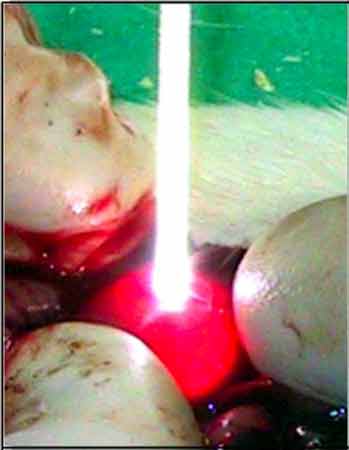Bright Idea: Light Bulb Burns Away Tumors

Beams of light concentrated from a light bulb could soon help burn away tumors in surgical operations that are as effective as laser surgery but 100 times cheaper, scientists in Israel now report.
Laser surgery pumps beams through optical fibers to zap diseased cells. The method is both highly effective and minimally invasive, but is unavailable to many patients worldwide "due to exorbitant cost," researcher Jeffrey Gordon, a physicist at Ben-Gurion University of the Negev in Sede Boqer, Israel, told LiveScience. Current laser fiber-optic surgical systems commonly cost upward of $100,000, he explained.
In place of expensive lasers, Gordon and his colleagues harnessed light from more commonplace sources. Initially, the researchers experimented with sunlight because it's free, but sunlight is only available during the daytime and is dependent on weather conditions.
Instead, Gordon and a team of engineers, physicists, surgeons and pathologists turned to xenon short-arc discharge lamps, the ultra-bright kind now used in movie projectors. In their system, a series of mirrors collects and focuses light from the lamp down a flexible optical fiber into an operating theater, where it emerges as cones of rays from the millimeter-sized tip of a surgeon's tool [image].
Gordon and his colleagues have now for the first time demonstrated their system in proof-of-principle operations on the livers and kidneys of live rats [image], showing efficacy comparable to laser fiber optic treatments.
Future research will test this system against malignant growths.
"A Singaporean company, Ray Medical Private, is currently embarking upon commercialization of our lamp surgery invention in close collaboration with us," Gordon said. Optimistically, they could have surgeon-friendly units in a year or two for testing, he added.
Get the world’s most fascinating discoveries delivered straight to your inbox.
Gordon and his colleagues published their findings online October 24 in the Journal of Biomedical Optics Letters.

